Balkinization
an unanticipated consequence of
Jack M. Balkin
Balkinization Symposiums: A Continuing List
E-mail:
Jack Balkin:
jackbalkin at yahoo.com
Bruce Ackerman
bruce.ackerman at yale.edu
Ian Ayres
ian.ayres at yale.edu
Corey Brettschneider
corey_brettschneider at brown.edu
Mary Dudziak
mary.l.dudziak at emory.edu
Joey Fishkin
joey.fishkin at gmail.com
Heather Gerken heather.gerken at yale.edu
Abbe Gluck abbe.gluck at yale.edu
Mark Graber
mgraber at law.umaryland.edu
Stephen Griffin
sgriffin at tulane.edu
Jonathan Hafetz
jonathan.hafetz at shu.edu
Jeremy Kessler
jkessler at law.columbia.edu
Andrew Koppelman
akoppelman at law.northwestern.edu
Marty Lederman
msl46 at law.georgetown.edu
Sanford Levinson
slevinson at law.utexas.edu
David Luban
david.luban at gmail.com
Gerard Magliocca
gmaglioc at iupui.edu
Jason Mazzone
mazzonej at illinois.edu
Linda McClain
lmcclain at bu.edu
John Mikhail
mikhail at law.georgetown.edu
Frank Pasquale
pasquale.frank at gmail.com
Nate Persily
npersily at gmail.com
Michael Stokes Paulsen
michaelstokespaulsen at gmail.com
Deborah Pearlstein
dpearlst at yu.edu
Rick Pildes
rick.pildes at nyu.edu
David Pozen
dpozen at law.columbia.edu
Richard Primus
raprimus at umich.edu
K. Sabeel Rahmansabeel.rahman at brooklaw.edu
Alice Ristroph
alice.ristroph at shu.edu
Neil Siegel
siegel at law.duke.edu
David Super
david.super at law.georgetown.edu
Brian Tamanaha
btamanaha at wulaw.wustl.edu
Nelson Tebbe
nelson.tebbe at brooklaw.edu
Mark Tushnet
mtushnet at law.harvard.edu
Adam Winkler
winkler at ucla.edu
Compendium of posts on Hobby Lobby and related cases
The Anti-Torture Memos: Balkinization Posts on Torture, Interrogation, Detention, War Powers, and OLC
The Anti-Torture Memos (arranged by topic)
Recent Posts
AAUP v. Rubio and the Big Chill
Just A Few Blogs
ACS Blog
Alas, a Blog
Althouse
Arts and Letters Daily
Atrios (Eschaton)
Bill of Health
Buzzflash.com
Buzz Machine
Cato at Liberty
Juan Cole (Informed Comment)
Concurring Opinions
The Constitution in 2020
Corrente
Crooked Timber
Daily Howler
Daily Kos
Dana Boyd
Brad DeLong
Digby (Hullabaloo)
Discriminations
Daniel Drezner
Kevin Drum (Mother Jones)
Electrolite
En Banc
Eunomia (Daniel Larison)
Fafblog
Michael Froomkin (Discourse.net)
GovLab (Beth Noveck)
Rick Hasen (Election Law)
History News Network
How Appealing
Ignatz (Sam Heldman)
The Importance of (Ernie Miller)
Infolaw
Instapundit
International Economic Law and Policy Blog
IntLawGrrls
Jacob Levy
Jesus' General
Jurisdynamics
The Kitchen Cabinet
Mark Kleiman
Law Blog Central
Larry Lessig
Lawyers, Guns and Money
Liberal Oasis
Brian Leiter's Law School Reports
The Leiter Reports
Marginal Revolution
Megan McArdle
Memeorandum
Metafilter
Mirror of Justice
The New Republic
Newseum
No More Mister Nice Blog
Brendan Nyhan
Opinio Juris
Orcinus
The Originalism Blog
Pandagon
Passport (Foreign Policy)
Overcoming Bias
Political Animal (Washington Monthly)
Political Theory Daily Review
Political Wire (Taegan Goddard)
The Poor Man
Virginia Postrel
Prawfsblawg
Public Reason
Jonathan Rauch
Raw Story
Redstate
ReligiousLeftLaw.com
Reporters Committee For Freedom of the Press
Reproductive Rights Blog
Rothman's Roadmap to the Right of Publicity
SCOTUS Blog
Seeing the Forest
Clay Shirky
The Shifted Librarian
The Situationist
Larry Solum (Legal Theory)
Andrew Sullivan
Talking Points Memo
Talk Left
Tapped
Tbogg
TechPresident
The Paper Chase (Jurist)
Tom Paine
Tom Tomorrow (This Modern World)
Eve Tushnet
Uggabugga
University of Chicago Law School Faculty Blog
Unqualified Offerings
The Volokh Conspiracy
War and Piece (Laura Rozen)
Wampum
Oliver Willis
Wonkette
Written Description
Matthew Yglesias
Yin
Your Choice of Feeds
1. XML
powered by
2. Atom Feed
3. RSS 2.0
Tuesday, October 07, 2025
AAUP v. Rubio and the Big Chill
Guest Blogger
Evelyn Douek Since it was handed down last week, AAUP v. Rubio
has been justifiably celebrated for its strong reaffirmation that the First
Amendment protects the speech of noncitizens just as it does the speech of
citizens. And there has been significant coverage of the rhetoric of Judge
Wiliam Young’s “blistering,”
“stirring,”
“searing”
rebuke of the Trump Administration’s campaign to deport noncitizens for their
political speech, and the ways in which his 161-page opinion grappled with how
to do justice in the Trump Era. Less attention has been paid, however, to a key
jurisprudential move the opinion makes and its importance in this particular moment.
AAUP v. Rubio marks the first case of the Trump Era to explicitly
identify and reject the primary and most pernicious form of speech suppression
employed by this Administration: Chill. What makes the opinion novel is that the First Amendment
rights it vindicates are not those of the non-citizens that the Administration
has attempted to deport for their speech, but instead those similarly situated persons
who are now chilled from expressing themselves freely. Mahmoud
Khalil, Rumeysa
Ozturk, and the many other noncitizens that have been rounded up for their
pro-Palestinian speech were not before the court in AAUP v. Rubio—the
various legal challenges to their deportations remain ongoing. Instead, the case
was brought by organizations representing students and faculty who argued that
the Administration’s practice of publicly targeting and making an example out
of these other non-citizens chilled them in the exercise of their own First
Amendment rights. As Judge Young correctly identified, the damage of this kind
of chilling campaign to public discourse is in fact much more severe than any
individual act of censorship. This is because chill is an especially harmful but efficient
form of speech control, as the Administration well knows. Direct censorship is
laborious, ad hoc, and happens only after the fact. Chill, by contrast, is a
form of prior restraint administered by the speaker themselves out of fear. And
Judge Young found that it was exactly this kind of chill that the
Administration set out to create. The
government never set out to “deport all pro-Palestinian non-citizens,” Judge
Young observed. Instead, it set out to do something “more invidious—to target a
few for speaking out … with the goal of tamping down pro-Palestinian student
protests and terrorizing similarly situated non-citizen (and other)
pro-Palestinians into silence.” The harms of such chill in fact extend far beyond other
non-citizens. As Judge Young took pains to emphasize, one of the reasons that the
chilling campaign documented by AAUP v. Rubio has been so successful is
because it has been “accompanied by the Trump administration's full-throated assault
on the First Amendment across the board.” Once people are made to understand
that the Administration will seek retribution against those that express
disfavored views, no one can be sure they can speak with abandon. In
this case, it was the department of Homeland Security that was weaponized to
create chill. But in the future, it could be the “Federal Home Loan Mortgage
Corporation, and the audit divisions of the I.R.S. and the Social Security
Administration” that might be “unconstitutionally weaponized against the
President's ever growing list of ‘enemies’ or opponents he ‘hates’
notwithstanding that political persecution is anathema to our Constitution and
everything for which America stands.” Thus, AAUP v. Rubio is a decision
about immigrants’ speech rights, to be sure. But it is also about so much more.
It is about the protections that the First Amendment offers against this kind
of intimidation. The First Amendment talks big game about chilling effects. The
cases tell us that First Amendment freedoms must be protected “not only against
heavy-handed frontal attack, but also from being stifled by more subtle
governmental interference” because they are “delicate and
vulnerable,” “sensitive,”
of “transcendent
value” and “supremely
precious in our society.” They proclaim that “inhibition as well
as prohibition against the exercise of precious First Amendment rights is a
power denied to government.” That concerns about chilling effects are why,
in an oft-quoted refrain reiterated by Chief Justice Roberts just a few years
ago, First Amendment freedoms “need
breathing space to survive.” But despite all this lovely rhetoric, chilling effects can
be hard to vindicate in court. Most obviously, people who are scared to speak
are often scared to sue, and we owe the decision in AAUP v. Rubio to the
brave plaintiffs and witnesses who overcame this fear to testify about the
effects of the Administration’s actions on them. But more fundamentally,
chilling effects can be hard to make cognizable through the dyadic model of
adversarial litigation, with its reticence to adjudicate harms to third-parties
not before the court. For this reason, many courts have recognized the chilling
effects of the Trump Administration’s actions when vindicating the First
Amendment rights of plaintiffs directly affected—law
firms subject to retaliatory executive orders, for example, or faculty
at universities the Administration is jawboning—but
AAUP v. Rubio is the first decision to uphold a claim against the Trump
Administration based on chilling effects alone. Outside this paradigm, courts
have struggled
to see the many ways in which this Administration wields governmental power
to make people scared to speak freely. But if the First Amendment promise of an “uninhibited,
robust, and wide-open” public sphere is to be made a reality, it is clear we
will need more decisions like AAUP v. Rubio, that recognize and protect
against this Big Chill. It needs more courts to recognize that when the
Administration retaliates against people for their speech, the harm goes far
beyond Mahmoud Khalil, or Jimmy Kimmel, or any individual victim. Indeed, the
harm is to all of us, whether or not we are directly affected or actually
chilled, by impoverishing public discourse through the silencing of those that
are. AAUP v. Rubio is therefore a landmark decision that
recognizes that chill is one of the most fundamental First Amendment injuries.
But as Judge Young’s opinion also makes clear, as anathema as chill is to the
First Amendment, it is also a constitutional injury that is difficult for
courts to fix. He has ordered that there be a further hearing on the “delicate
task” of crafting a remedy, to consider what a court might be able to do to
thaw. But as Judge Young notes that the court is limited in the extent to which
it can constrain the speech of public officials, and especially the president,
which—by threatening dissenters with retribution—chills public discourse. In
his opinion, it is clear the judge is wrestling with how courts can create a
culture of respect for dissent and free speech when one does not already exist.
AAUP v. Rubio therefore both shows the full sweep and
strength of the First Amendment in the protections it offers citizens and non-citizens
alike against both direct censorship and indirect inhibition—but also its profound
vulnerabilities that are being so effectively exploited. It is a reminder that
courts can and must play an important role in protecting constitutional rights;
but they cannot do it alone. Evelyn Douek is Associate Professor of Law at Stanford Law School. You can reach her by e-mail at edouek@law.stanford.edu.
Posted
9:30 AM
by Guest Blogger [link]
Books by Balkinization Bloggers

Gerard N. Magliocca, The Actual Art of Governing: Justice Robert H. Jackson's Concurring Opinion in the Steel Seizure Case (Oxford University Press, 2025)

Linda C. McClain and Aziza Ahmed, The Routledge Companion to Gender and COVID-19 (Routledge, 2024)

David Pozen, The Constitution of the War on Drugs (Oxford University Press, 2024)

Jack M. Balkin, Memory and Authority: The Uses of History in Constitutional Interpretation (Yale University Press, 2024)
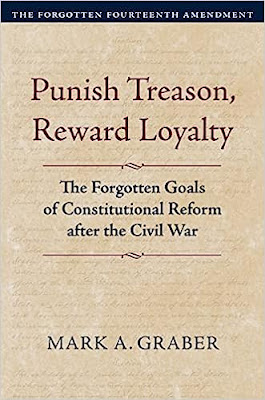
Mark A. Graber, Punish Treason, Reward Loyalty: The Forgotten Goals of Constitutional Reform after the Civil War (University of Kansas Press, 2023)
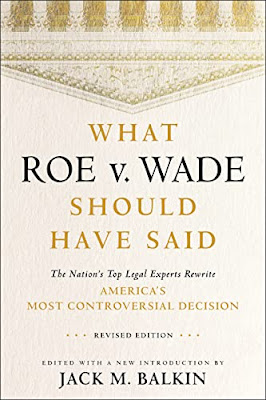
Jack M. Balkin, What Roe v. Wade Should Have Said: The Nation's Top Legal Experts Rewrite America's Most Controversial Decision - Revised Edition (NYU Press, 2023)

Andrew Koppelman, Burning Down the House: How Libertarian Philosophy Was Corrupted by Delusion and Greed (St. Martin’s Press, 2022)

Gerard N. Magliocca, Washington's Heir: The Life of Justice Bushrod Washington (Oxford University Press, 2022)
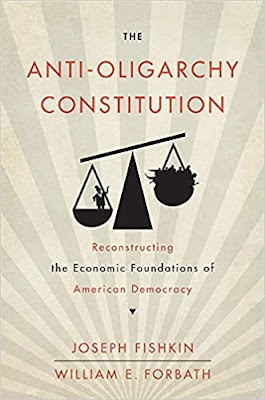
Joseph Fishkin and William E. Forbath, The Anti-Oligarchy Constitution: Reconstructing the Economic Foundations of American Democracy (Harvard University Press, 2022)
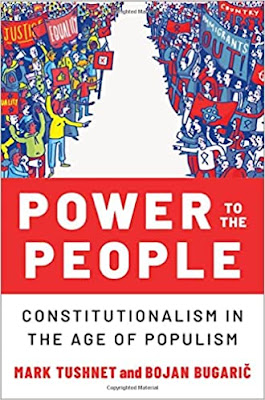
Mark Tushnet and Bojan Bugaric, Power to the People: Constitutionalism in the Age of Populism (Oxford University Press 2021).

Mark Philip Bradley and Mary L. Dudziak, eds., Making the Forever War: Marilyn B. Young on the Culture and Politics of American Militarism Culture and Politics in the Cold War and Beyond (University of Massachusetts Press, 2021).

Jack M. Balkin, What Obergefell v. Hodges Should Have Said: The Nation's Top Legal Experts Rewrite America's Same-Sex Marriage Decision (Yale University Press, 2020)

Frank Pasquale, New Laws of Robotics: Defending Human Expertise in the Age of AI (Belknap Press, 2020)

Jack M. Balkin, The Cycles of Constitutional Time (Oxford University Press, 2020)

Mark Tushnet, Taking Back the Constitution: Activist Judges and the Next Age of American Law (Yale University Press 2020).

Andrew Koppelman, Gay Rights vs. Religious Liberty?: The Unnecessary Conflict (Oxford University Press, 2020)

Ezekiel J Emanuel and Abbe R. Gluck, The Trillion Dollar Revolution: How the Affordable Care Act Transformed Politics, Law, and Health Care in America (PublicAffairs, 2020)

Linda C. McClain, Who's the Bigot?: Learning from Conflicts over Marriage and Civil Rights Law (Oxford University Press, 2020)
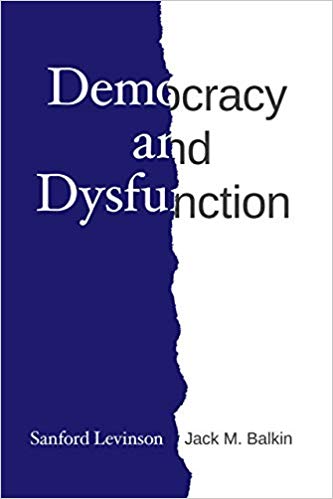
Sanford Levinson and Jack M. Balkin, Democracy and Dysfunction (University of Chicago Press, 2019)

Sanford Levinson, Written in Stone: Public Monuments in Changing Societies (Duke University Press 2018)

Mark A. Graber, Sanford Levinson, and Mark Tushnet, eds., Constitutional Democracy in Crisis? (Oxford University Press 2018)

Gerard Magliocca, The Heart of the Constitution: How the Bill of Rights became the Bill of Rights (Oxford University Press, 2018)

Cynthia Levinson and Sanford Levinson, Fault Lines in the Constitution: The Framers, Their Fights, and the Flaws that Affect Us Today (Peachtree Publishers, 2017)

Brian Z. Tamanaha, A Realistic Theory of Law (Cambridge University Press 2017)

Sanford Levinson, Nullification and Secession in Modern Constitutional Thought (University Press of Kansas 2016)

Sanford Levinson, An Argument Open to All: Reading The Federalist in the 21st Century (Yale University Press 2015)

Stephen M. Griffin, Broken Trust: Dysfunctional Government and Constitutional Reform (University Press of Kansas, 2015)

Frank Pasquale, The Black Box Society: The Secret Algorithms That Control Money and Information (Harvard University Press, 2015)

Bruce Ackerman, We the People, Volume 3: The Civil Rights Revolution (Harvard University Press, 2014)
Balkinization Symposium on We the People, Volume 3: The Civil Rights Revolution

Joseph Fishkin, Bottlenecks: A New Theory of Equal Opportunity (Oxford University Press, 2014)

Mark A. Graber, A New Introduction to American Constitutionalism (Oxford University Press, 2013)

John Mikhail, Elements of Moral Cognition: Rawls' Linguistic Analogy and the Cognitive Science of Moral and Legal Judgment (Cambridge University Press, 2013)

Gerard N. Magliocca, American Founding Son: John Bingham and the Invention of the Fourteenth Amendment (New York University Press, 2013)

Stephen M. Griffin, Long Wars and the Constitution (Harvard University Press, 2013)

Andrew Koppelman, The Tough Luck Constitution and the Assault on Health Care Reform (Oxford University Press, 2013)

James E. Fleming and Linda C. McClain, Ordered Liberty: Rights, Responsibilities, and Virtues (Harvard University Press, 2013)
Balkinization Symposium on Ordered Liberty: Rights, Responsibilities, and Virtues

Andrew Koppelman, Defending American Religious Neutrality (Harvard University Press, 2013)

Brian Z. Tamanaha, Failing Law Schools (University of Chicago Press, 2012)

Sanford Levinson, Framed: America's 51 Constitutions and the Crisis of Governance (Oxford University Press, 2012)

Linda C. McClain and Joanna L. Grossman, Gender Equality: Dimensions of Women's Equal Citizenship (Cambridge University Press, 2012)

Mary Dudziak, War Time: An Idea, Its History, Its Consequences (Oxford University Press, 2012)

Jack M. Balkin, Living Originalism (Harvard University Press, 2011)

Jason Mazzone, Copyfraud and Other Abuses of Intellectual Property Law (Stanford University Press, 2011)

Richard W. Garnett and Andrew Koppelman, First Amendment Stories, (Foundation Press 2011)

Jack M. Balkin, Constitutional Redemption: Political Faith in an Unjust World (Harvard University Press, 2011)

Gerard Magliocca, The Tragedy of William Jennings Bryan: Constitutional Law and the Politics of Backlash (Yale University Press, 2011)

Bernard Harcourt, The Illusion of Free Markets: Punishment and the Myth of Natural Order (Harvard University Press, 2010)

Bruce Ackerman, The Decline and Fall of the American Republic (Harvard University Press, 2010)
Balkinization Symposium on The Decline and Fall of the American Republic

Ian Ayres. Carrots and Sticks: Unlock the Power of Incentives to Get Things Done (Bantam Books, 2010)

Mark Tushnet, Why the Constitution Matters (Yale University Press 2010)
Ian Ayres and Barry Nalebuff: Lifecycle Investing: A New, Safe, and Audacious Way to Improve the Performance of Your Retirement Portfolio (Basic Books, 2010)
.jpg)
Jack M. Balkin, The Laws of Change: I Ching and the Philosophy of Life (2d Edition, Sybil Creek Press 2009)

Brian Z. Tamanaha, Beyond the Formalist-Realist Divide: The Role of Politics in Judging (Princeton University Press 2009)
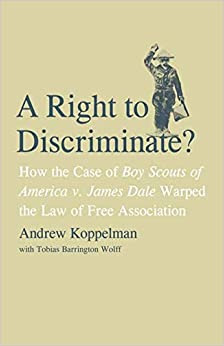
Andrew Koppelman and Tobias Barrington Wolff, A Right to Discriminate?: How the Case of Boy Scouts of America v. James Dale Warped the Law of Free Association (Yale University Press 2009)

Jack M. Balkin and Reva B. Siegel, The Constitution in 2020 (Oxford University Press 2009)
Heather K. Gerken, The Democracy Index: Why Our Election System Is Failing and How to Fix It (Princeton University Press 2009)

Mary Dudziak, Exporting American Dreams: Thurgood Marshall's African Journey (Oxford University Press 2008)

David Luban, Legal Ethics and Human Dignity (Cambridge Univ. Press 2007)

Ian Ayres, Super Crunchers: Why Thinking-By-Numbers is the New Way to be Smart (Bantam 2007)

Jack M. Balkin, James Grimmelmann, Eddan Katz, Nimrod Kozlovski, Shlomit Wagman and Tal Zarsky, eds., Cybercrime: Digital Cops in a Networked Environment (N.Y.U. Press 2007)
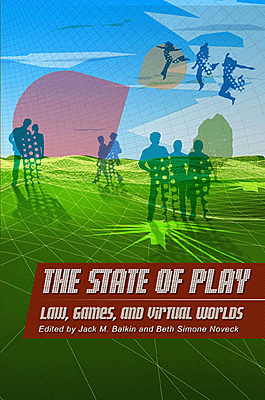
Jack M. Balkin and Beth Simone Noveck, The State of Play: Law, Games, and Virtual Worlds (N.Y.U. Press 2006)

Andrew Koppelman, Same Sex, Different States: When Same-Sex Marriages Cross State Lines (Yale University Press 2006)
Brian Tamanaha, Law as a Means to an End (Cambridge University Press 2006)
Sanford Levinson, Our Undemocratic Constitution (Oxford University Press 2006)
Mark Graber, Dred Scott and the Problem of Constitutional Evil (Cambridge University Press 2006)
Jack M. Balkin, ed., What Roe v. Wade Should Have Said (N.Y.U. Press 2005)
Sanford Levinson, ed., Torture: A Collection (Oxford University Press 2004)
Balkin.com homepage
Bibliography
Conlaw.net
Cultural Software
Writings
Opeds
The Information Society Project
BrownvBoard.com
Useful Links
Syllabi and Exams